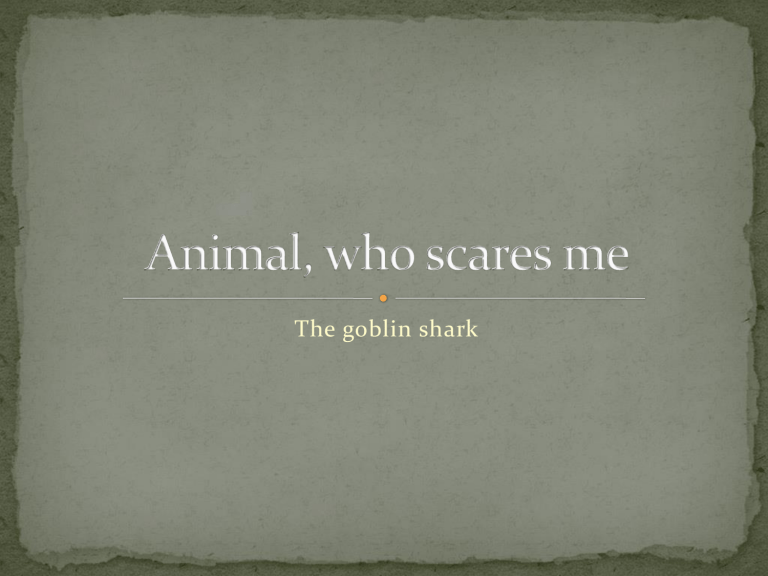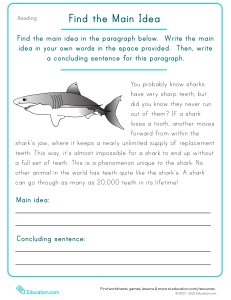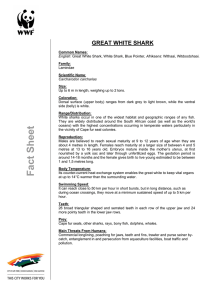
The goblin shark The goblin shark has been caught in all three major oceans, indicating a wide global distribution. In the Atlantic Ocean, it has been recorded from the northern Gulf of Mexico, Suriname, French Guiana, and southern Brazil in the west, and France, Portugal, Madeira, and Senegal in the east. It has also been collected from seamounts along the Mid-Atlantic Ridge. In the Indo-Pacific and Oceania, it has been found off South Africa, Mozambique, Japan, Taiwan, Australia and New Zealand. This species has been recorded from off East Cape to Kaikōura Canyon and from the Challenger Plateau near New Zealand. A single eastern Pacific specimen is known, collected off southern California. This species is most often found over the upper continental slope at depths of 270–960 m (890– 3,150 ft). It has been caught as deep as 1,300 m (4,300 ft), and a tooth has been found lodged in an undersea cable at a depth of 1,370 m The goblin shark (Mitsukurina owstoni) is a rare species of deepsea shark. Sometimes called a "living fossil", it is the only extant representative of the family Mitsukurinidae, a lineage some 125 million years old. This pinkskinned animal has a distinctive profile with an elongated, flat snout, and highly protrusible jaws containing prominent nail-like teeth. It is usually between 3 and 4 m (10 and 13 ft) long when mature, though it can grow considerably larger such as one captured in 2000 that is thought to have measured 6 m (20 ft). Goblin sharks are benthopelagic creatures that inhabit upper continental slopes, submarine canyons, and seamounts throughout the world at depths greater than 100 m (330 ft), with adults found deeper than juveniles. Some researchers believe that these sharks could also dive to depths of up to 1,300 m (4,270 ft), for short periods of time. The goblin shark has a distinctively long and flat snout, resembling a blade. The proportional length of the snout decreases with age.[20] The eyes are small and lack protective nictitating membranes; behind the eyes are spiracles. The large mouth is parabolic in shape. The jaws are very protrusible and can be extended almost to the end of the snout, though normally they are held flush against the underside of the head. It has 35–53 upper and 31–62 lower tooth rows. The teeth in the main part of the jaws are long and narrow, particularly those near the symphysis (jaw midpoint), and are finely grooved lengthwise. The rear teeth near the corners of the jaw are small and have a flattened shape for crushing. Much individual variation of tooth length and width occurs, as for whether the teeth have a smaller cusplet on each side of the main cusp, and regarding the presence of toothless gaps at the symphysis or between the main and rear teeth. The five pairs of gill slits are short, with the gill filaments inside partly exposed; the fifth pair is above the origin of the pectoral fins.





